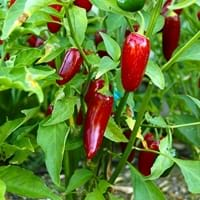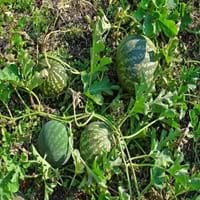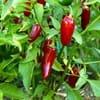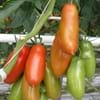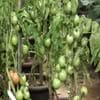Life Span
Annual and Perennial
Annual
Origin
Mexico, Central America, South America
Hybrid origin, Africa, Southern Africa
Types
Not Available
Not Available
Habitat
Loamy soils, Well Drained
along watercourse, Grassland
USDA Hardiness Zone
5-12
10-12
Sunset Zone
A1, A2, A3, H1, H2, 1a, 1b, 2a, 2b, 3a, 3b, 4, 5, 6, 7, 8, 9, 10, 11, 12, 13, 14, 15, 16, 17, 18, 19, 20, 21, 22, 23, 24
A3, H1, H2, 1a, 1b, 2a, 2b, 3a, 3b, 4, 5, 6, 7, 8, 9, 10, 11, 12, 13, 14, 15, 16, 17, 18, 19, 20, 21, 22, 23, 24
Habit
Upright/Erect
Prostrate/Trailing
Flower Color
White, Ivory
Yellow
Flower Color Modifier
Bicolor
Bicolor
Fruit Color
Red, Green, Dark Green
Green, Crimson, Dark Green
Leaf Color in Spring
Dark Green
Light Green
Leaf Color in Summer
Dark Green
Green, Gray Green
Leaf Color in Fall
Dark Green, Black
Green, Gray Green
Leaf Color in Winter
Green
Not Available
Leaf Shape
Elliptic
Irregular
Plant Season
Spring, Summer, Fall
Summer, Fall
Sunlight
Full Sun
Full Sun
Growth Rate
Fast
Very Fast
The pH of Soil
Acidic, Neutral
Neutral
Soil Drainage
Well drained
Well drained
Bloom Time
Spring, Summer, Fall, Indeterminate
Indeterminate
Tolerances
Drought
Drought
Where to Plant?
Ground
Container, Ground
How to Plant?
Seedlings
Seedlings, Transplanting
Plant Maintenance
Medium
High
Watering Requirements
Average Water Needs
Requires consistently moist soil, Requires regular watering, Requires watering in the growing season, Water Deeply
In Summer
Lots of watering
Lots of watering
In Spring
Moderate
Moderate
In Winter
Average Water
Average Water
Soil pH
Acidic, Neutral
Neutral
Soil Drainage Capacity
Well drained
Well drained
Sun Exposure
Full Sun
Full Sun
Pruning
Remove damaged leaves, Remove dead branches, Remove dead leaves
Remove damaged leaves, Remove dead leaves, Remove dead or diseased plant parts
Fertilizers
All-Purpose Liquid Fertilizer
fertilize in growing season, Nitrogen, Potassium
Pests and Diseases
Red blotch
brown-spot needle blight, Cutworms, Downy mildew, Flea beetle, Flea Beetles, Fungal Diseases, fungus, Fusarium wilt, Powdery mildew, Red blotch
Plant Tolerance
Drought
Drought, Salt
Flowers
Insignificant
Showy
Flower Petal Number
Single
Single
Foliage Texture
Medium
Coarse
Foliage Sheen
Glossy
Matte
Attracts
Not Available
Bees, Insects, Squirrels
Allergy
Not Available
Stomach pain, Throat itching
Aesthetic Uses
Showy Purposes
Ground Cover
Beauty Benefits
Not Available
Not Available
Environmental Uses
Air purification
Air purification, Food for animals, Food for birds, Food for insects, Versatility
Medicinal Uses
Not Available
High blood pressure, Nutrients
Part of Plant Used
Fruits
Fruits
Other Uses
Used As Food
Used As Food, Used for its medicinal properties, Used in making beverages
Used As Indoor Plant
No
No
Used As Outdoor Plant
Yes
Yes
Garden Design
Container, Edible, Herb / Vegetable, Tropical
Edible, Fruit / Fruit Tree, Herb / Vegetable, Tropical, Vine
Botanical Name
CAPSICUM annuum 'Tam Mild Jalapeno II'
CITRULLUS lanatus 'Crimson Sweet'
Common Name
Jalapeño Pepper, Mild Jalapeño Pepper
Crimson Sweet Watermelon, Watermelon
In Hindi
जैलेपिनो मिर्च
तरबूज़
In German
Jalapeno-Chilischote
Wassermelone
In French
Piment jalapeno
Citrullus lanatus
In Spanish
Chile jalapeño
Citrullus lanatus
In Greek
jalapeño πιπέρι
καρπούζι
In Portuguese
Pimenta jalapeno
Citrullus lanatus
In Polish
Papryka jalapeno
Citrullus lanatus
In Latin
jalapeno piperis
Citrullus lanatus
Phylum
Tracheophyta
Embryophyta
Class
Magnoliopsida
Magnoliopsida
Order
Solanales
Cucurbitales
Family
Solanaceae
Cucurbitaceae
Clade
Not Available
Angiosperms, Eudicots, Rosids
Tribe
Capsiceae
Benincaseae
Subfamily
Solanoideae
Cucurbitoideae
Number of Species
Not Available
Not Available
Season and Care of Jalapeño Pepper and Citrullus Lanatus
Season and care of Jalapeño Pepper and Citrullus Lanatus is important to know. While considering everything about Jalapeño Pepper and Citrullus Lanatus Care, growing season is an essential factor. Jalapeño Pepper season is Spring, Summer and Fall and Citrullus Lanatus season is Spring, Summer and Fall. The type of soil for Jalapeño Pepper is Loam and for Citrullus Lanatus is Loam while the PH of soil for Jalapeño Pepper is Acidic, Neutral and for Citrullus Lanatus is Neutral.
Jalapeño Pepper and Citrullus Lanatus Physical Information
Jalapeño Pepper and Citrullus Lanatus physical information is very important for comparison. Jalapeño Pepper height is 40.60 cm and width 40.60 cm whereas Citrullus Lanatus height is 15.20 cm and width 240.00 cm. The color specification of Jalapeño Pepper and Citrullus Lanatus are as follows:
Jalapeño Pepper flower color: White and Ivory
Jalapeño Pepper leaf color: Dark Green
Citrullus Lanatus flower color: Yellow
- Citrullus Lanatus leaf color: Light Green
Care of Jalapeño Pepper and Citrullus Lanatus
Care of Jalapeño Pepper and Citrullus Lanatus include pruning, fertilizers, watering etc. Jalapeño Pepper pruning is done Remove damaged leaves, Remove dead branches and Remove dead leaves and Citrullus Lanatus pruning is done Remove damaged leaves, Remove dead leaves and Remove dead or diseased plant parts. In summer Jalapeño Pepper needs Lots of watering and in winter, it needs Average Water. Whereas, in summer Citrullus Lanatus needs Lots of watering and in winter, it needs Average Water.
